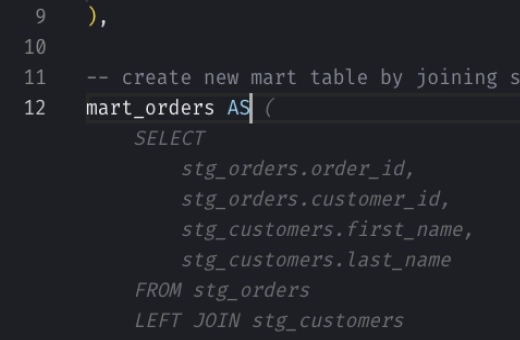Snowflake DROP COLUMN: How to Remove Columns to a Table
The DROP COLUMN command in Snowflake is used to remove one or more columns from an existing table. This command, similar to ADD COLUMN, allows you to modify the table structure without needing to recreate it.
Syntax
_10DROP COLUMN [IF EXISTS] col_name [CASCADE | RESTRICT]
where:
- IF EXISTS: This option ensures that no error is thrown if the specified column doesn’t exist in the table. It’s particularly useful in scripts where you might not be certain if a column is present.
- CASCADE | RESTRICT: These options control how the system should behave if the column is involved in constraints like foreign keys:
- CASCADE: Automatically drops any constraints (like foreign keys) that involve the column.
- RESTRICT: Prevents the column from being dropped if it is involved in any constraints, returning an error instead.
How It Works
- Metadata Operation: Dropping a column is primarily a metadata operation, which means it updates the table’s metadata to no longer include the column but doesn’t immediately remove the data associated with the column from storage.
- Micro-partition Management: In Snowflake, data is stored in micro-partitions. When a column is dropped, the actual space it occupied is not immediately reclaimed; it is freed when the micro-partition is next re-written, which might occur during DML operations like INSERT, UPDATE, or DELETE, or during a re-clustering operation.
Examples
Drop an Existing Column Safely
_10ALTER TABLE sales_data DROP COLUMN IF EXISTS old_data CASCADE;
This command attempts to drop the old_data column from the sales_data table. If the column is involved in any foreign key constraints, those constraints are also dropped (CASCADE), and if the column does not exist, no error is thrown due to the IF EXISTS clause.
Avoid Accidental Drops
_10ALTER TABLE customer_info DROP COLUMN account_number RESTRICT;
This command will only drop the account_number column if it is not involved in any constraints. If there are any constraints depending on this column, the command will fail, and an error will be reported, which helps in avoiding accidental data relationship destruction.
Usage Tips
- Check Dependencies: Before dropping a column, especially without the
CASCADEoption, check for any dependencies, such as foreign key constraints, that might affect other parts of your database schema. - Backup Data: Consider backing up the data in the column if it might be needed later, as once a column is dropped and its micro-partition is re-written, the data cannot be easily recovered.
- Monitor Performance: Be aware of potential performance impacts during high-load periods, as dropping a column in a large table might temporarily impact performance due to metadata locking and subsequent re-clustering or DML operations needed to reclaim space.
